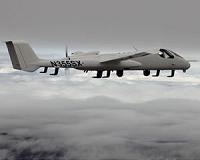| . |  |
. |
Tel Aviv, Israel (UPI) May 13, 2011 Israel has disclosed that a large, but unspecified, chunk of the funding for its upcoming multiyear defense plan will go to launching spy satellites to provide round-the-clock real-time surveillance of Iran and other "areas of interest." The air force, which has been responsible for all launches from Israel, says there are six "observational satellites" in orbit, four owned by the state and two privately owned craft. These provide imagery and other data to the military's Intelligence Corps, which has operational control of the satellites once they're in orbit. Only one of the six satellites, the high-resolution TecSar 1, which carries an advanced imaging system called Synthetic Aperture Radar, is able to transmit images at night and in bad weather. But even TecSar, built by state-owned Israel Aerospace Industries and launched from India in January 2008 amid considerable secrecy, is only able to observe "areas of interest" every 90 minutes. The defense establishment wants more low-orbit satellites, with advanced surveillance equipment, in space providing constant coverage of target areas, such as Iran or Syria. "Our dream, of course, is up-to-date video images of these areas," the commander of the air force's satellite and space unit, an unidentified colonel, told The Jerusalem Post. "But in practice, the fact that we have a satellite that provides us with dozens of frames from an expanse of targets is an extremely valuable asset." The other satellites in orbit include three from the Ofek series also built by IAI -- 5, 7 and 9, which was launched in June 2010 -- and the Eros A and B commercial satellites. However, the military didn't mention the 660-pound Risat-2 satellite launched by India April 20, 2009, carrying IAI sensors to which the Israelis no doubt have access. Risat-2, a radar-imaging craft with multi-spectral aperture radar, was built specifically for military surveillance with Israeli cooperation following the November 2008 Mumbai massacre by Islamist gunmen. The Indian launches are vital for Israel. Due to the Jewish state's geographical location, it is only able to launch intelligence-gathering satellites westward against the Earth's rotation. That limits the range of orbits over Iran. Launching from the Satish Dhawan Space Center in southeastern India means that Israel can launch eastward, adding another dimension to its surveillance of Iran. IAI, flagship of Israel's defense industry, is the lead contractor in military space projects, while the main subcontractors are Elta, Rafael, Elbit Systems' El-Op, Israel Military Industries, Tadiran, Elisra and Specterlink. Under the defense plan now being formulated, Rafael is believed to be working on technology to enable spy satellites to be launched from Boeing F-15 fighter jet. "The air force would like to fire a number of satellites weighing (220 pounds) that will cover the field of battle," said Haim Eshed, director of the Defense Ministry's space program. This will be part of an ambitious plan presented to Prime Minister Binyamin Netanyahu, a defense hawk, in August 2010 by Eshed and Menachem Greenblum, director general of the Science and Technology Ministry. "We have the assets but we're not marketing them," Eshed told The Jerusalem Post at the time. He said Israel's specialty was producing "mini satellites" like the 650-pound Ofek-9, in contrast to the much larger craft weighing several tons operated by the United States and Russia. Eshed and his colleagues see Israel's satellite business as a major export earner. Despite Israel's advanced technology, space platform sales have earned $2.5 billion over the last two decades. Yet the global space market is worth $250 billion a year and he reckons Israel could get at least 5 percent of that. If Netanyahu's government approves the new defense plan and boosts Israel's space industry, it might be able to move closer to that objective. The plan envisions stepped-up exports by 2015, although state-of-the-art payloads and platforms used in operational satellites are not likely to be up for sale. Israel is already in talks with several countries and defense companies about possible collaboration on satellite ventures. IAI is reported to be looking to work with Northrop Grumman of the United States to produce and market mini-satellites. The next major step for Israel's satellite industry is launching Opsat 3000, which will have much more powerful sensors than the Ofek series.
Share This Article With Planet Earth
Related Links Military Space News at SpaceWar.com
 Northrop Grumman Unveils Newest Intel Gathering Aircraft System
Northrop Grumman Unveils Newest Intel Gathering Aircraft SystemSan Diego CA (SPX) May 10, 2011 Military users will be able to get real-time high-definition video, view infrared imagery, use radar and even listen in on communications signals - all at the same time - using a new intelligence-gathering aircraft system unveiled by Northrop Grumman. Firebird offers a large internal payload bay and an ability to operate multiple intelligence, surveillance, reconnaissance (ISR) and communi ... read more |
|
| The content herein, unless otherwise known to be public domain, are Copyright 1995-2010 - SpaceDaily. AFP and UPI Wire Stories are copyright Agence France-Presse and United Press International. ESA Portal Reports are copyright European Space Agency. All NASA sourced material is public domain. Additional copyrights may apply in whole or part to other bona fide parties. Advertising does not imply endorsement,agreement or approval of any opinions, statements or information provided by SpaceDaily on any Web page published or hosted by SpaceDaily. Privacy Statement |